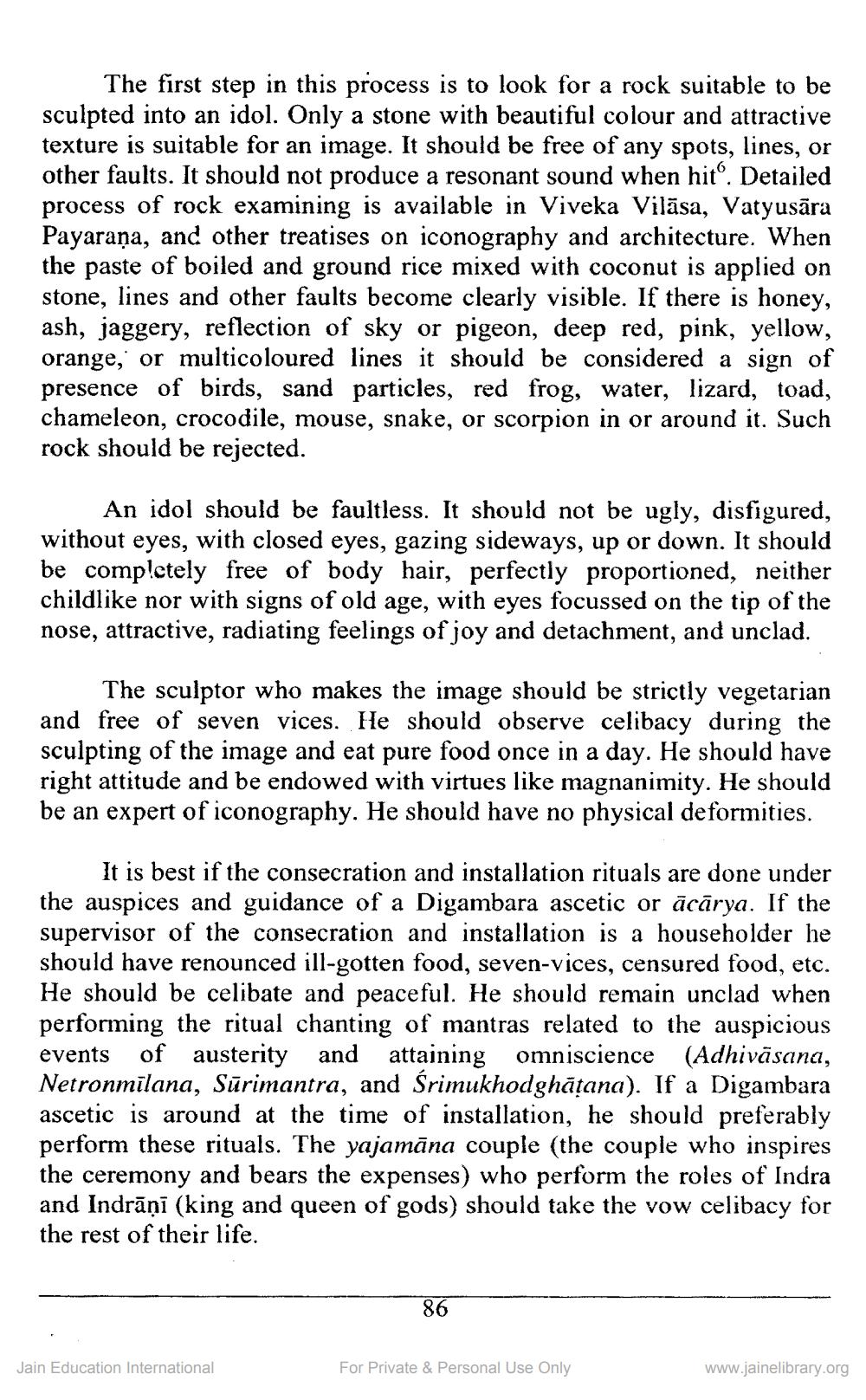________________
The first step in this process is to look for a rock suitable to be sculpted into an idol. Only a stone with beautiful colour and attractive texture is suitable for an image. It should be free of any spots, lines, or other faults. It should not produce a resonant sound when hit. Detailed process of rock examining is available in Viveka Vilāsa, Vatyusāra Payaraṇa, and other treatises on iconography and architecture. When the paste of boiled and ground rice mixed with coconut is applied on stone, lines and other faults become clearly visible. If there is honey, ash, jaggery, reflection of sky or pigeon, deep red, pink, yellow, orange, or multicoloured lines it should be considered a sign of presence of birds, sand particles, red frog, water, lizard, toad, chameleon, crocodile, mouse, snake, or scorpion in or around it. Such rock should be rejected.
An idol should be faultless. It should not be ugly, disfigured, without eyes, with closed eyes, gazing sideways, up or down. It should be completely free of body hair, perfectly proportioned, neither childlike nor with signs of old age, with eyes focussed on the tip of the nose, attractive, radiating feelings of joy and detachment, and unclad.
The sculptor who makes the image should be strictly vegetarian and free of seven vices. He should observe celibacy during the sculpting of the image and eat pure food once in a day. He should have right attitude and be endowed with virtues like magnanimity. He should be an expert of iconography. He should have no physical deformities.
It is best if the consecration and installation rituals are done under the auspices and guidance of a Digambara ascetic or ācārya. If the supervisor of the consecration and installation is a householder he should have renounced ill-gotten food, seven-vices, censured food, etc. He should be celibate and peaceful. He should remain unclad when performing the ritual chanting of mantras related to the auspicious events of austerity and attaining omniscience (Adhivāsana, Netronmīlana, Sūrimantra, and Śrimukhodghāṭana). If a Digambara ascetic is around at the time of installation, he should preferably perform these rituals. The yajamāna couple (the couple who inspires the ceremony and bears the expenses) who perform the roles of Indra and Indrāṇī (king and queen of gods) should take the vow celibacy for the rest of their life.
Jain Education International
86
For Private & Personal Use Only
www.jainelibrary.org




